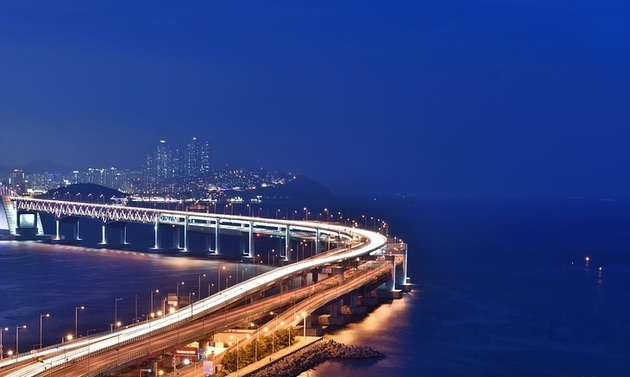After a spate of North Korean missile tests in the first three months of this year – and fears of an impending nuclear test – South Korean President-elect Yoon Suk-Yeol wants a redeployment of US strategic assets in South Korea to bolster the country’s deterrence.
According to Asia Times, after a conference between US and South Korean officials in Washington on Tuesday (April 5), South Korean lawmaker Park Jin stated that “deploying strategic assets is an important part of strengthening extended deterrence” and that both countries “discussed the issue today in that sense.” Among the US strategic assets South Korea wants to be redeployed to its territory are nuclear-powered submarines, aircraft carriers and long-range bombers. Apart from the redeployment of such strategic assets, both countries are also seeking new defense technology partnerships.
In a conference in February, Kang Eun-Ho, the Minister of South Korea’s Defense Acquisition Program Administration, said that South Korea’s commercial industries have made significant advances and the US could tap into them for the development of its own industry, focusing on fields such as AI, quantum computing and autonomous technologies. He also added that South Korea has several tech industry-leading firms, such as Samsung, Hanwha and LG, and that South Korea could fill a critical US semiconductor supply gap.
Emphasizing the complementary nature of South Korean technology and US defense interests, Robert Brown, president and CEO of the Association of the United States Army, said that “dominance in key technology fields, such as AI, 5G capabilities, robotics, biotechnology and leveraging data is key to ensuring stability in the Indo-Pacific.”
These moves come after a spate of North Korean missile tests in January, February and March this year. On January 15, North Korea tested two short-range railway-mounted ballistic missiles which traveled 430 kilometers at a maximum altitude of 36 kilometers after being launched eastward from the northern coast of the country. North Korea subsequently conducted more missile tests on the 25th, 27th and 30th of January, with the last one possibly its longest-range missile test since November 2017, with a suspected Hwasong-12 intermediate-range ballistic missile reaching an altitude of 2,000 kilometers and a range of 800 kilometers. North Korea followed up these successive tests with another one on February 27. The missile was suspected to have been launched from Sunan, where Pyongyang’s international airport is located.
According to the South Korean Joint Chiefs of Staff, the missile flew to a maximum altitude of 620 kilometers, with a range of 300 kilometers, indicating a lofted launch trajectory. Subsequently, North Korea’s state news agency KCNA claimed the launch was for the development of a reconnaissance satellite system. North Korea tested yet another ballistic missile off its east coast on March 24. The missile was launched from Sunan near Pyongyang, reached an altitude of 6,200 kilometers and had a range of 1,080 kilometers. In response to the test, South Korea conducted its own missile tests from land, sea and air-based launch platforms.
In addition to these missile tests, North Korea could possibly soon resume nuclear testing, perhaps even next week in commemoration of the 110th birthday of its founder Kim Il Sung on April 15. North Korea has conducted six known nuclear tests since 2006, the most recent being in September 2017.
Satellite imagery this month showed North Korea has allegedly resumed construction at its Punggye-ri nuclear test site, which was previously stopped in 2018 after North Korean leader Kim Jong Un pledged to halt nuclear weapons tests. While the site was previously declared destroyed in 2018, with its test tunnels blown up and collapsed, it is believed the damage was only slight and could be easily reversible. While it is possible North Korea may be readying the site to resume nuclear testing, a full renovation of the test facility may take months or years, and the country may even build a new test site.
Yet another concerning development regarding North Korea’s nuclear program was reported in August last year when it allegedly restarted its Yongbyon nuclear reactor. Yongbyon, a 5-megawatt nuclear reactor, is at the heart of North Korea’s nuclear program, producing the plutonium necessary for the country’s nuclear warheads. This was the first sign of activity at the nuclear reactor since December 2018, months after former US president Donald Trump met Kim Jong-Un in Singapore.






